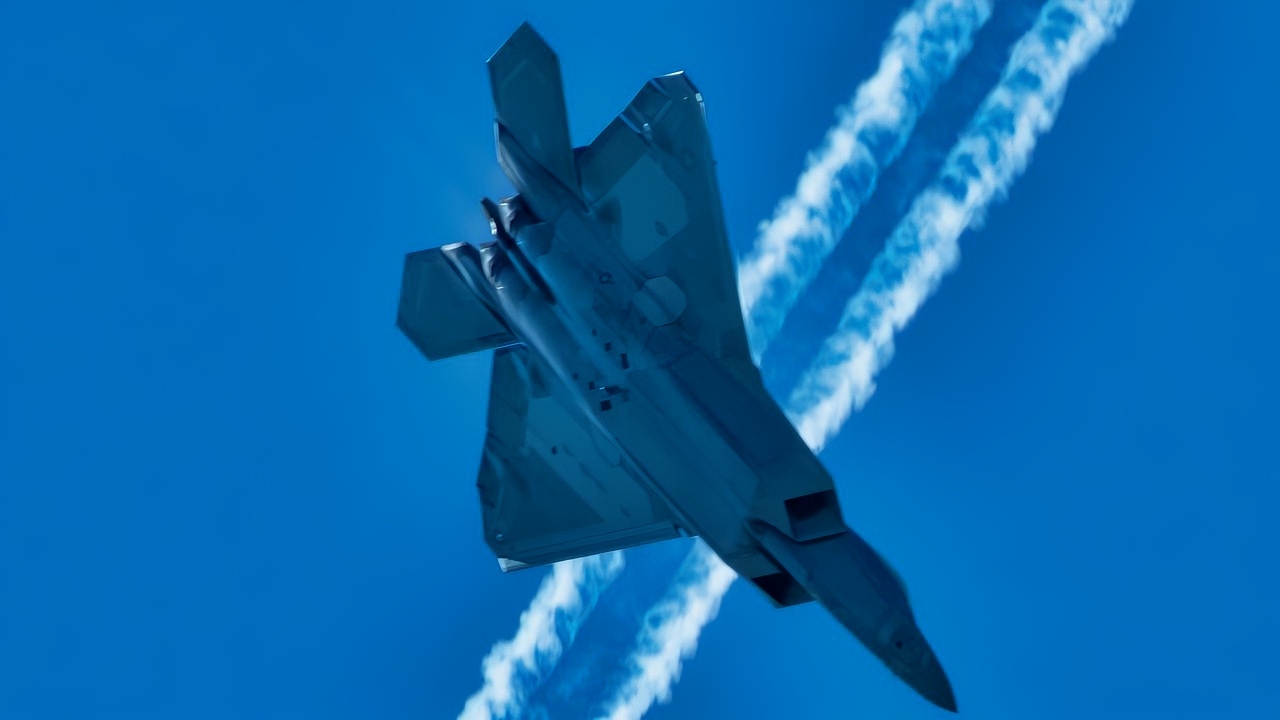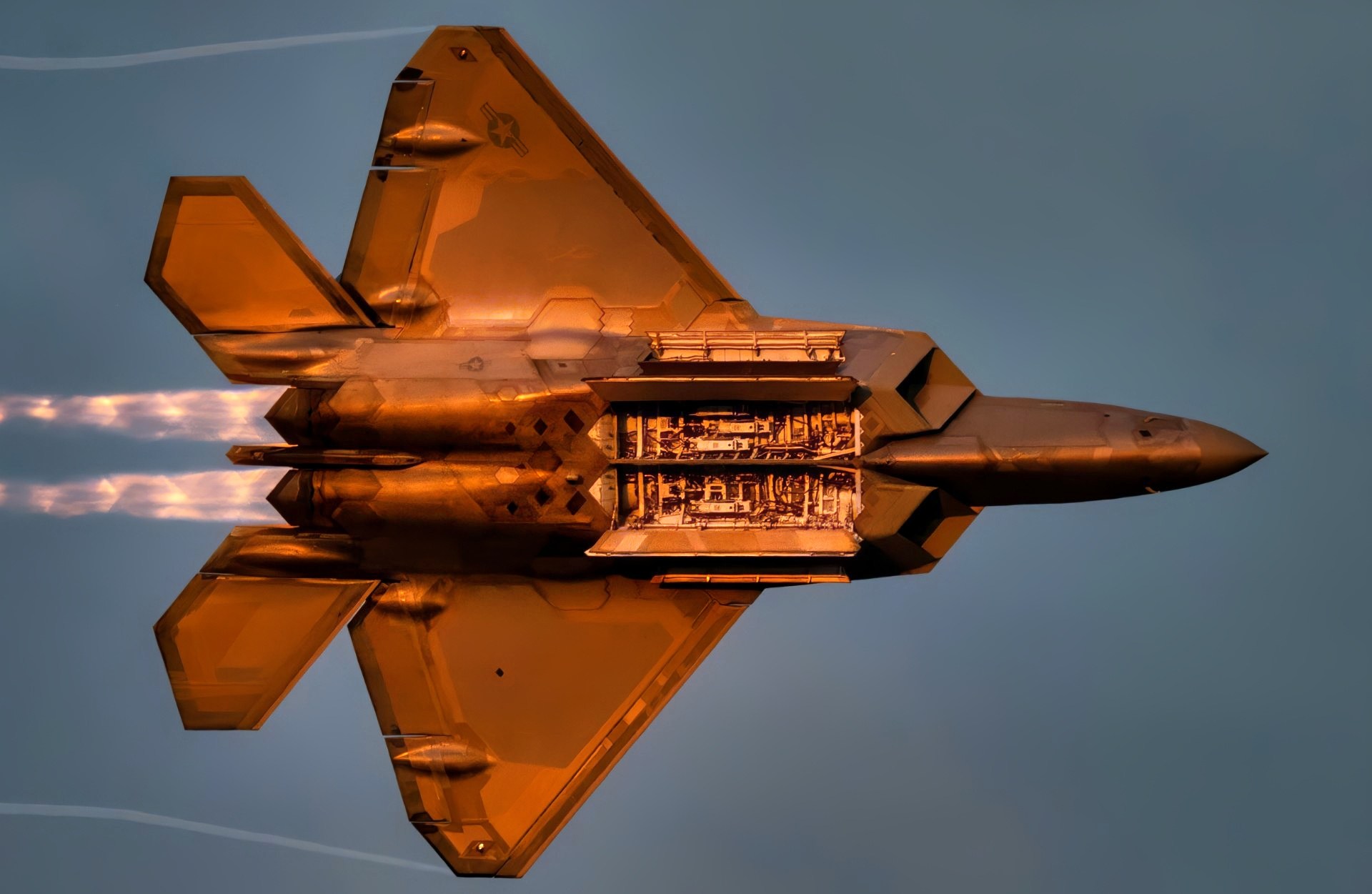Key Points and Summary – The U.S. Air Force is moving forward with a plan to upgrade its oldest, training-only F-22 Raptors (Block 20) to a combat-capable standard.
-The move reverses an earlier Air Force proposal to scrap the jets, following a mandate from Congress to preserve the fleet.

U.S. Air Force Gen. Kevin B. Schneider, Pacific Air Forces commander, pilots the lead F-22 Raptor rendezvousing with a C-17 Globemaster III, both from Joint Base Pearl Harbor-Hickam, during a mission off the coast of O‘ahu, April 8, 2025. PACAF provides ready and lethal forces to ensure stability and security in the Indo-Pacific. (U.S. Air Force photo by Tech. Sgt. Emerson Nuñez)
-The modernization package includes an open mission systems architecture, new sensors, enhanced stealth coatings, and the ability to team with unmanned drones.
-This will increase the combat-ready Raptor fleet by over 20%, providing a crucial hedge against any potential delays in the next-generation F-47 fighter program.

NGAD F-47 Fighter. Image Credit: Creative Commons.
Bringing the ‘Zombie’ F-22 Raptor Fighters Back to Combat-Ready Status
Recently, it was announced that Lockheed Martin intended to upgrade some of its oldest F-22 Raptor models.
The Block 20 F-22s, the oldest models in the U.S.’s inventory, have thus far been used mostly as training aircraft.
The Air Force had considered scrapping these older fighters in the past, but now there is the possibility of modernizing these older frames
The intention behind these upgrades is to keep the F-22 in operation for a couple more years while the F-47 finishes development.
The F-22s the Air Force Didn’t Want
The Block 20 F-22s differ from their more advanced counterparts, namely the Block 30 and Block 35, in several key areas.
While they retain the core stealth and supercruise features that define the Raptor, they lack the sophisticated avionics, sensors, and weapons integration found in later models. This has restricted their use to non-combat roles, particularly in pilot training and developmental testing. The proposed upgrades aim to close this capability gap and bring the Block 20s closer to parity with the frontline variants.

F-22 Raptor Fighter. Image Credit: Creative Commons.
Previously, the Air Force had considered scrapping all of its Block 20 F-22 fighters and replacing them with F-15EXs.
In 2023, the Air Force’s proposed budget for that fiscal year excluded maintenance on these fighters and instead requested funds to procure other fighter jets to replace them.
However, the House Armed Services Committee blocked the plan, stating that the F-22, even the older variants, were far too vital for national security. Instead, Congress suggested that the Block 20 should be modernized, rather than scrapped.
What the Upgrade Package Includes
What do the proposed upgrades from Lockheed include?
One of the central components of the upgrade plan is the implementation of an open mission systems architecture.
This software-based framework enables the rapid integration of new technologies, facilitating easier updates to avionics, sensors, and weapons systems as threats evolve.
By adopting this flexible architecture, the Air Force can future-proof the Block 20s and ensure they remain relevant in a rapidly changing combat environment.
The proposed upgrades also enhance Block 20’s stealth profile.

U.S. Air Force Maj. Josh Gunderson, F-22 Demonstration Team pilot, soars through the sky during a demonstration practice Feb. 27, 2020, at Davis-Monthan Air Force Base, Ariz. The Heritage Flight Training Course is a training course for all single-ship aerial demonstration teams prior to the upcoming summer air show season. (U.S. Air Force Photo by Captain Kip Sumner)
These improvements would involve enhancements to radar-absorbing materials and coatings, enabling the aircraft to maintain its low-observable profile.
This is especially important as adversaries develop more advanced radar systems capable of detecting stealth aircraft.
Alongside these physical upgrades, the Air Force plans to modernize the radar and sensor suite of the Block 20s.
This includes integrating infrared search and track (IRST) sensors and advanced threat warning receivers, which would significantly improve situational awareness and targeting capabilities.
Keeping the F-22 Raptor Around for a While Longer
Electronic warfare systems are another area of focus. The upgraded Raptors would receive new electronic countermeasures to better defend against enemy radar and jamming technologies.
These systems are crucial for survival in contested environments, where electronic attacks are increasingly common.
Additionally, the aircraft would be modified to carry newer munitions, such as the AIM-260 Joint Advanced Tactical Missile (JATM), which offers extended range and improved performance against modern threats.

U.S. Air Force Capt. Nick “Laz” Le Tourneau, F-22 Raptor Aerial Demonstration Team commander, performs an aerial maneuver during the Cocoa Beach air show in Florida, July 12, 2025. The F-22 Aerial Demonstration Team highlights cutting-edge airpower, precision, skill, all while reinforcing public confidence in the Air Force’s ability to protect and defend. (U.S. Air Force photo by Staff Sgt. Lauren Cobin)
A particularly forward-looking aspect of the upgrade plan is the integration of crewed-uncrewed teaming capabilities.
OJ Sanchez, vice president and general manager of Lockheed Martin’s secretive Skunk Works research and development arm, said that “The F-22 is kind of at the forefront of how to do that.”
This would allow the Block 20s to operate alongside autonomous drones, sharing sensor data and coordinating attacks.
Such capabilities are central to the Air Force’s vision for future air combat, where manned and unmanned systems work together to achieve mission objectives.
Why the F-22 Should Stay
The F-22 is undoubtedly an advanced fighter jet, but why should the Air Force bother maintaining a fighter jet that is no longer in production?
First and foremost, it would increase the number of combat-coded F-22s by over 20%, from 143 to potentially 175 aircraft.
This expansion is significant at a time when peer adversaries, such as China and Russia, are fielding advanced fighters, including the J-20 and Su-57.

Su-57 Felon Fighter Stealth. Image Credit: Creative Commons.
A larger fleet of combat-ready Raptors would enhance deterrence and provide greater operational flexibility.
Another consideration is the balance between training and operational readiness. Currently, the Block 20s handle the bulk of initial pilot training.
If these aircraft were retired, the Air Force would have to use combat-coded Block 30/35 jets for training, which would reduce the number of mission-ready aircraft and increase maintenance demands.
Upgrading the Block 20s would preserve this training capacity while also adding to the combat fleet.
A Hedge in Case the F-47 Goes Awry
Keeping around the Block 20s is also crucial in case more problems arise with the F-47. NGAD, which includes the future sixth-generation F-47 fighter, has faced development challenges and timeline uncertainties in the past.
Upgrading the Block 20s provides a stopgap measure, ensuring that the Air Force maintains robust air superiority capabilities until NGAD is fully operational.
The estimated price tag for upgrading the Block 20s is around $3.3 billion. While this is a substantial investment, it may be more economical than developing new aircraft or reallocating existing combat-coded jets for training.
Moreover, the hidden costs of divestment, such as increased wear on remaining aircraft and reduced readiness, could outweigh the expense of modernization.
About the Author: Isaac Seitz
Isaac Seitz, a Defense Columnist, graduated from Patrick Henry College’s Strategic Intelligence and National Security program. He has also studied Russian at Middlebury Language Schools and has worked as an intelligence Analyst in the private sector.
More Military
Army MV-75 Has a “Digital Backbone” to Stand Up to China in the Pacific
The F-35 Stealth Fighter Great Leap Forward Has Arrived
New Challenger 3 NATO Tank Is Built for Just 1 Mission It Can’t Fulfill
Sunk 10,000 Feet Down: A U.S. Navy Nuclear Submarine Was Lost, And No One Knows Why










